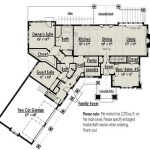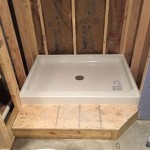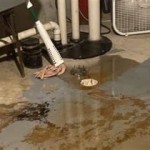How To Level Basement Floor Around Drain
Uneven basement floors around drains can pose a safety hazard and hinder the proper flow of water. Leveling the floor around the drain is crucial to ensure smooth drainage, prevent water pooling, and maintain the integrity of your basement. Here's a step-by-step guide to help you level your basement floor around the drain:
1. Assess the Situation:
Before beginning, assess the extent of the unevenness and identify the areas that need to be leveled. Check if the drain is clogged or damaged, as this may contribute to the problem. If necessary, clear any debris or call a plumber to address any drainage issues.
2. Prepare the Drain Area:
Remove any standing water from the drain area and clean the surface thoroughly. Use a wire brush or scouring pad to remove any dirt or debris from the drain grate and surrounding concrete.
3. Measure and Mark the Level:
Use a laser level or a long level to determine the level of the floor. Mark the desired level on the concrete around the drain using a chalk line or a pencil.
4. Create a Mortar Mix:
Prepare a self-leveling mortar mix according to the manufacturer's instructions. Use a drill with a mixing paddle to achieve a smooth, lump-free consistency.
5. Apply the Mortar:
Starting from the drain, gradually pour the mortar mix onto the uneven areas, working outwards. Use a trowel or a screed to spread the mortar evenly, following the marked level.
6. Smooth and Tamp the Surface:
Use a trowel or a screed to smooth the surface of the mortar, ensuring it is level and free of any bumps or hollows. Tamp the surface lightly with a tamp rod or a piece of wood to remove any air pockets.
7. Allow to Cure:
The curing time for self-leveling mortar can vary depending on the product used. Refer to the manufacturer's instructions for the specific curing time required. Keep the area dry and undisturbed during this time.
8. Protect the Drain:
Once the mortar has cured, place a drain cover or a piece of cardboard over the drain to protect it from debris and moisture.
Additional Tips:
• For larger areas, consider using a self-leveling concrete mix, which can flow more evenly and cover greater distances.
• If the unevenness is significant, you may need to excavate the floor around the drain and fill it with a concrete leveling compound.
• Ensure proper ventilation during the process to prevent moisture buildup.
• Leveling the floor around the drain creates a more functional and aesthetically pleasing basement.

How To Level A Concrete Floor With Self Leveling

Floor Drains Finished Basements Best Practices Solutions Csg Renovation

6 Types Of Basement Floor Drains

2 Ways To Level An Uneven Basement Floor The Real Seal Llc
How To Install Tile On Sloped Floor With Drain Ceramic Advice Forums John Bridge

Basement Floor Drain Keeping Your Home Dry

Remedial Drainage Options Waterproof Magazine

Self Leveling Concrete Preparing For Installation Tips

18 Tips For Working With Self Leveling Underlayment

Basement Drains 101 A Simple Guide For Busy Homeowners








